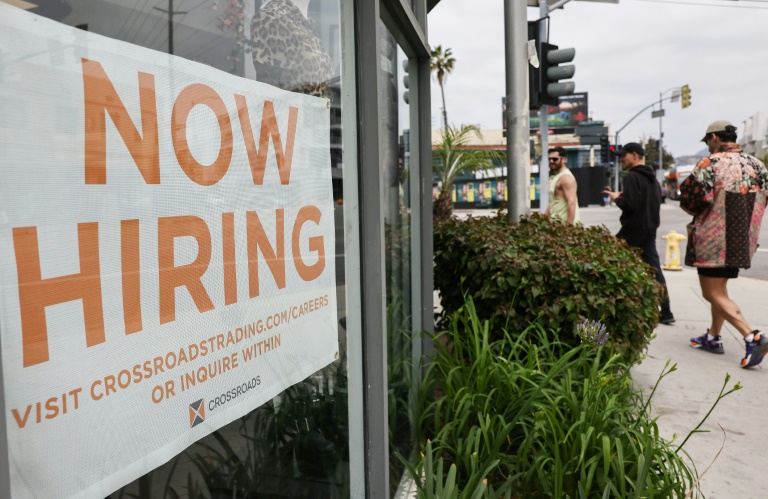US hiring cooler than expected in July but jobs market still solid

The United States added 187,000 jobs in July after a similar increase in June, according to government data, adding to signs that the labor market in the world’s biggest economy is cooling
Washington – Job growth in the United States was lower than anticipated in July, according to government data released Friday, hovering at the slowest pace since late 2020 in encouraging news for policymakers.
The figures suggest that the labor market in the world’s biggest economy is cooling although wage gains remain strong, adding to signs that officials can lower inflation without triggering a major recession.
Analysts have been warning of a downturn as the central bank lifted interest rates rapidly to ease demand and rein in cost-of-living pressures, recently bringing rates to the highest level since 2001.
But hiring stayed solid as the United States added 187,000 jobs last month, slightly above the 185,000 figure in June which was revised downward, said the Department of Labor on Friday.
The jobless rate came in at 3.5 percent, a touch below June’s 3.6 percent figure as well and remaining at a historically low level.
President Joe Biden touted Friday’s data as the result of an economic agenda he dubs “Bidenomics.”
“This follows recent news that our economy continues to grow, while inflation has fallen by nearly two thirds and is at its lowest level in more than two years,” Biden said. He added that the administration is lowering costs for families.
Overall, “job gains occurred in health care, social assistance, financial activities, and wholesale trade,” said the Labor Department. The labor force participation rate held steady as well.
– ‘Buoyant’ wage growth –
But average hourly earnings rose 0.4 percent in July, the same pace as the month before, according to Friday’s report.
Compared with a year ago, earnings were 4.4 percent up, a level that some analysts believe could still be too elevated for the Federal Reserve.
“Wages did not ease as expected, which will be disappointing to policymakers,” said Rubeela Farooqi, chief US economist at High Frequency Economics.
Despite higher interest rates, consumer spending has remained resilient, in part supported by salary gains. There have also been concerns that growing wages could feed into inflation.
“Reflecting the tightness of the labor market, average hourly earnings continue to rise a buoyant rate,” said Nationwide chief economist Kathy Bostjancic.
This is well above the pre-Covid pace of growth between 3.0 percent and 3.5 percent and “not consistent” with the two percent inflation rate sought by Fed policymakers, she added.
But EY-Parthenon senior economist Lydia Boussour expects wage growth to eventually fall as hiring eases.
– ‘Gently cooling’ –
For now, the latest numbers could lift hopes that the Fed soon ends its cycle of rate increases.
“The July jobs report painted the picture of a labor market that is gently cooling to a slower and more sustainable pace,” said Boussour.
She added that downward revisions to prior employment gains and a shorter workweek “point to softer labor market momentum.”
The Fed is likely to leave policy unchanged at their next meeting, she said, although the central bank could leave the door open to one additional rate hike before year-end — should the data justify it.
Officials are expected to assess the labor report for August, along with upcoming inflation readings, before making their next rate decision in late September.
Farooqi said: “Fed officials will want to see further evidence of easing, in job growth, wages and inflation, to more sustainable levels.”
